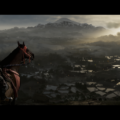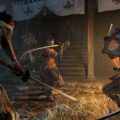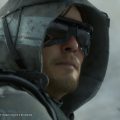Ghost of Tsushima Took Its Time

Sony Interactive Entertainment and Sucker Punch’s Ghost of Tsushima has remained on my radar since it was announced at the Paris Games Show in 2017. I’m a big fan, perhaps even a sucker for, samurai-themed games. Despite the recent glut we received, the frequency in which titles in the setting have released this generation pales in comparison to the comparatively-halcyon PS2 era and those before. It’s why I’ll at least keep an eye on any game that gives the setting a shot, even if they don’t turn out so well.
Even at the time it was revealed, I had the feeling that it wasn’t coming any time soon despite how Sucker Punch hadn’t released a project since Infamous: First Light in 2014, and only partially because no release timeframe was initially provided. Sony’s had a funny habit of announcing games years in advance during this console gen, though not to the extent that Square Enix used to in the last console generation. Yet, I’m still surprised that it took quite this long to release, with a release date of July 17th worldwide — delayed from its previous June 26th date because of the current pandemic.
I’m even more surprised at how little they’ve shown since the reveal, prior to the 18-minute demonstration provided through a State of Play this past week. Before then, all we had was the debut trailer from 2017 that I barely remembered, the much longer gameplay demo from E3 2018 (the last time Sony attended E3, notably), the trailer from The Game Awards 2019, and the all-story-no-gameplay trailer from March. Before Thursday, the 2018 demo from nearly two years ago was the only unhindered gameplay we’d seen, enough to wonder why this game was peculiarly living up to its name. After the gameplay demo, I can’t pinpoint why its marketing campaign has been scant on showing it in action, though it did look rudimentary for an action-adventure game coming in 2020.

Ghost of Tsushima takes place on Tsushima Island in 13th century Japan, during the first Mongol invasion. A good chunk of the island has been recreated as an open-world sandbox for players. It’s no surprise for a Sony-funded AAA game to have environments are a sight to behold, despite the current hype cycle for next-generation consoles fully revving up this week. It’s production values and the fact that so few games have open world historical Japanese settings might give it a pass for otherwise treading very familiar territory for a AAA open world game, to the point of including gathering materials for crafting and worshipping at shrines for upgrades.
I’m not completely dead inside (yet), so I couldn’t help but love how a cute fox guides Jin to the shrines, and that Jin can pet him (or her). That’s adorable.
This is a video game, so a good chunk of the demo was focused on combat. It wasn’t easy to gather all the details just by watching, and not all the combat options were explained in detail, so don’t take my observant descriptions as fact. The game apparently allows for protagonist Jin to kill some enemies in one hit if the attack is timed correctly and he assumes the right stance; but other more normal battles will involve breaking enemy defenses to attack and kill them, which look similar to how they work in the Assassin’s Creed and Batman Arkham games. Like the exploration, there’s nothing new here, but it all looks very pretty. Combat in open world games tends to be okay at best, and while I hope it at least lives up to that, I do appreciate that its animations floor all the others.
The combat isn’t the only aspect very reminiscent of Ubisoft’s Assassin’s Creed series; so is nearly everything else. The game resembled an AC title in parts when it was shown in 2018, but that footage wasn’t enough to say a good chunk of it resembled those. The new footage, however, makes it easy to see where Sucker Punch acquired some, let’s say, inspiration from. Jin also has access to a bow and arrow, and can assassinate enemies through a one-hit kill from behind or above, like how the Hidden Blade worked in the AC games (and will work again soon). He even hops and jumps up environments like an AC character. It’s nice that we’re getting two games in the franchise this year, so to speak.

In comparatively smaller features: They thankfully fixed the lip synching for the Japanese voice track, which was off to hilarious degrees in previous Japanese trailers. It will still have the problem of the motion capture actors not being Japanese, but at least it won’t look quite as awkward. It will also have a black-and-white filter to make it resemble a classic samurai film, an idea that might have been inspired by Giant Bomb contributor Alex Navarro’s suggestion. Jin will have plenty of outfits to show off his fashion sense, similar to a game in a franchise with a name you’ll never guess.
Ghost of Tsushima is treading very familiar ground for a AAA action-adventure game with at least sometimes-light stealth, exactly the kind of game that usually arrives at the end of a console generation. Merely acknowledging that and the ways in which this game appears predictable sounds cynical, but predictability isn’t entirely a bad thing. They can be critic-proof, yes, but can also be the kind of breezy game someone needs to step away from reality. I’m not just talking about me there, a guy who loved the hell out of Assassin’s Creed Origins when I finished it a year ago.
There might be ingenious ideas in the game lurking around, hidden from the marketing campaign. But even if it doesn’t have those, this will ideally be as polished an experience as it can be. Sucker Punch has been working on it for long enough.





